20 Types of Flowering Weeds
These plants may look look nice, but they can be an annoyance to gardeners.
Jul 29, 2021
Weeds are everywhere, and the bane of gardeners worldwide. But what are they? How are weeds different from the flowers that you plant in your garden? It’s a matter of perception. Weeds are just rapidly spreading plants that have sprouted in a place where they’re not wanted, and they are usually wildflowers. The Merriam-Webster Dictionary defines a weed as “a plant that is not valued where it is growing and is usually of vigorous growth.”
Many are unattractive, invasive, and annoying, and some are downright dangerous. On the other hand, some weeds can be beautiful. Wildflower gardens are composed of plants that would be considered weeds in a manicured rose garden. Will you think of that unusual wildflower that popped up in your flower bed a good weed that you keep? It’s up to you as a gardener to decide which will enhance your garden and which you will discard.
Here are 20 common plants that you see along roadsides, lawns, and gardens that are usually thought of as flowering weeds.
1. Black nightshades (Solanum nigrum)
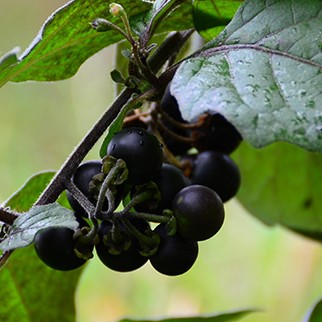
Black nightshades are classified as broadleaf annuals, and they are commonly found in lawns or gardens that have really rich soil. These weeds are visually described as being climbing or bushy plants, and they typically produce white or purple flowers — they are also known to produce red or purple fruits. If you notice any signs of these in your yard you’ll want to remove them as soon as possible, as all parts of the plant are considered to be poisonous.
2. Chicory (Chicorium intybus)

This cheerful, flowering weed is widespread throughout North America. It reaches four feet in height with bright blue flowers that grow right against the stems. Cultivated varieties of chicory (radicchio and Belgian endive) are used for salad greens, and the roots can be used as a coffee substitute and sweetener. Chicory was used as a substitute for coffee in World War II, and blends of coffee and chicory have been popular in Europe and the Middle East for centuries. The young leaves of wild chicory can be used as salad greens, too, before they mature and become bitter. So whether you call it a wildflower or pretty weed, chicory is one of those plants that you can leave on the roadside or cultivate in your yard.
3. Common evening primrose (Oenothera biennis)
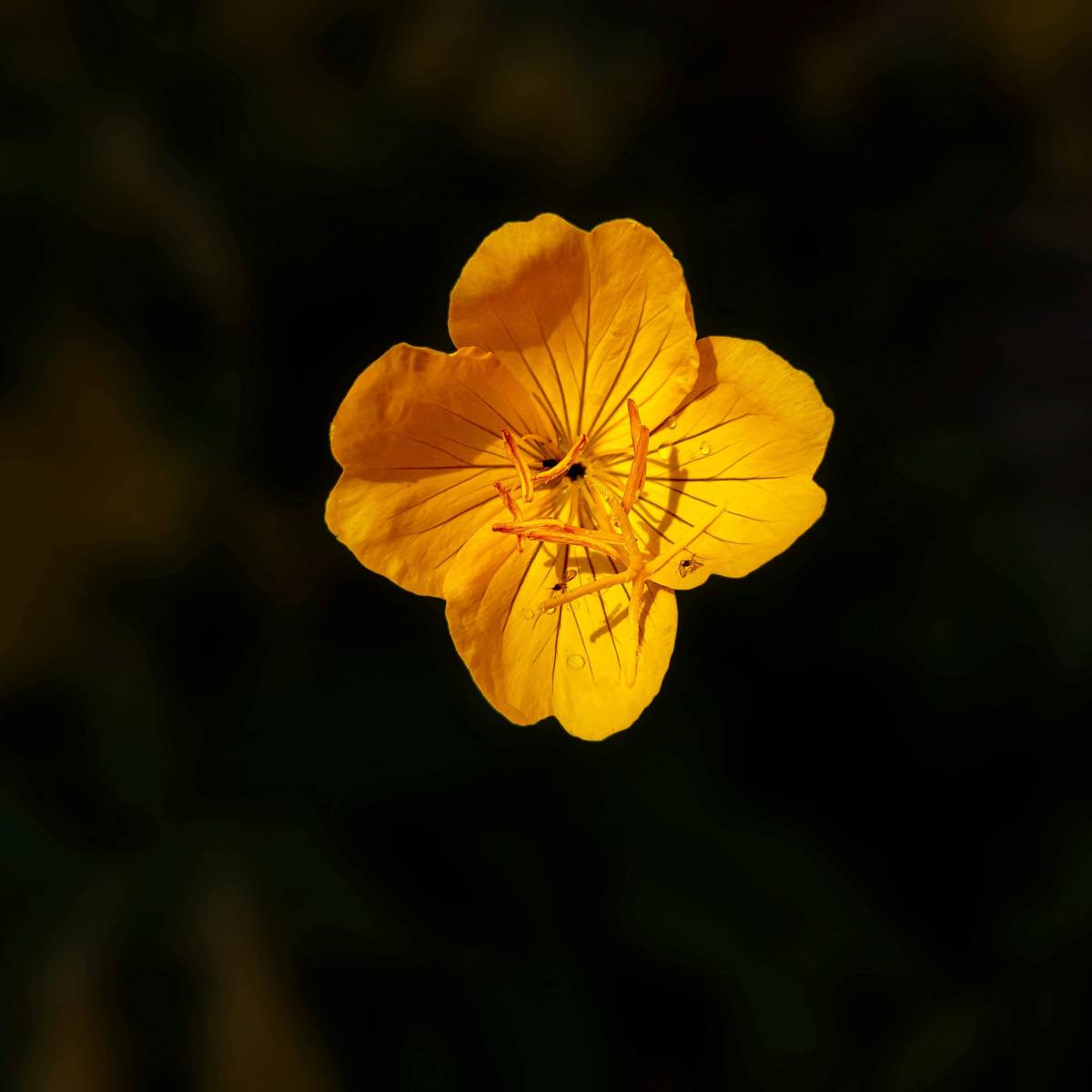
Common evening primrose is native to the United States and is a biennial, meaning that it blooms the second year. It is a distinctive plant with unusual characteristics. Its four-petaled, yellow flowers are nocturnal. They open in the evening and wilt the next day, and the four-parted sticky stigma in the center of the flowers is in the shape of a cross. These beautiful plants grow in the sun to partial shade in most kinds of soil, making them adaptable all over the U.S. Are they weeds, wildflowers, or garden plants? They can be any of the three depending on your perspective.
4. Common ragworts (Jacobaea vulgaris, syn)
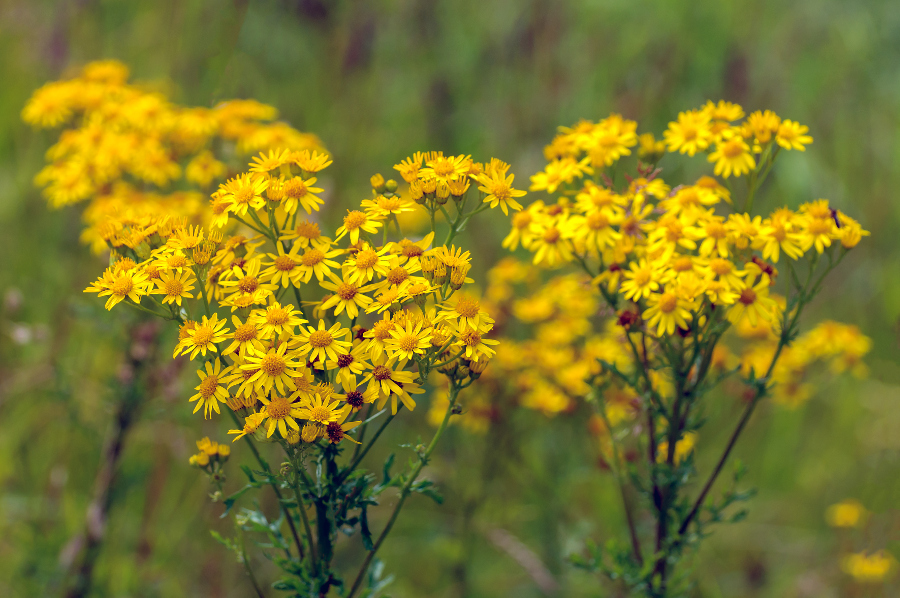
Common ragworts are described as having lobed leaves that are blue or green in color and yellow flowers that are shaped like a star. Since common ragworts do re-seed at a pretty fast rate, it’s important that you remove the first few as soon as you notice them to prevent future growth.
Tip: Common ragworts produce toxins, so as you remove them, make sure you wear gloves to protect your hands.
5. Common St. John’s wort (Hypericum perforatum)
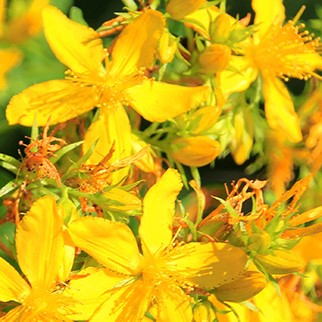
This yellow-flowered weed is native across temperate Europe and Asia, but has naturalized and become invasive throughout the Americas. St. John’s wort has been used medicinally for centuries for the treatment of wounds, and is currently popular as an herbal antidepressant. It spreads rapidly, and its clusters of half-inch, bright yellow flowers are pretty enough to be used as a two-foot-tall filler for bare spots in the garden.
6. Creeping buttercups (Ranunculus repens)
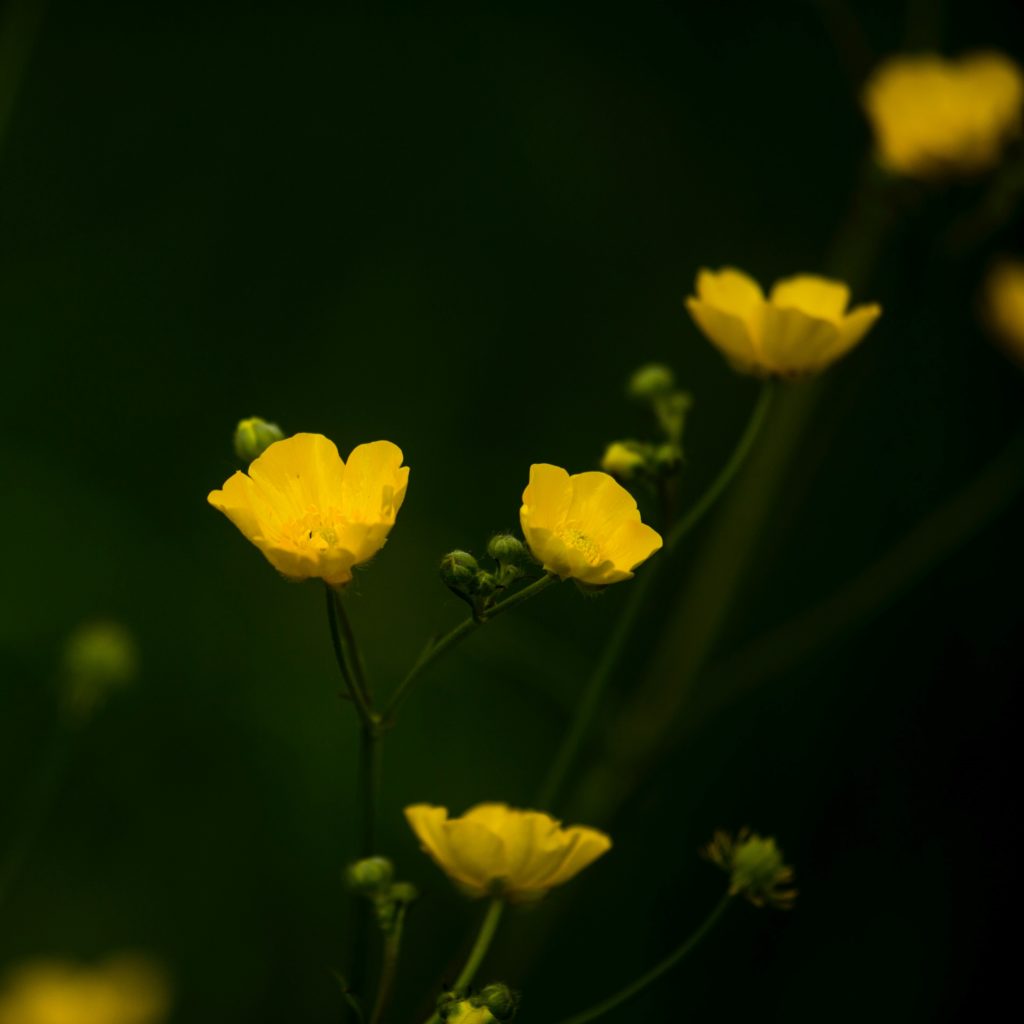
Creeping buttercups are most commonly found in soils that are damp, so if you want to keep these at bay you’ll need to keep a close watch on how well-drained your soil is. These weeds have small but bright yellow flowers, and they grow and spread as quickly as they do as a result of their root system.
7. Creeping thistles (Cirsium arvense)
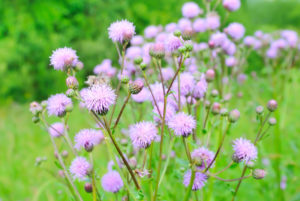
Similar name to the above, but very, very different! You’re more likely to see creeping thistles in lawns that were just seeded or in bare spots of already existing lawns, and visually, they have light purple flowers —not yellow. Additionally, their leaves are said to be spiky, so you definitely won’t want to have them growing anywhere that you might walk! To remove these, you’ll want to use a fork or a daisy grubber.
8. Daisy weeds (Bellis Perennis)
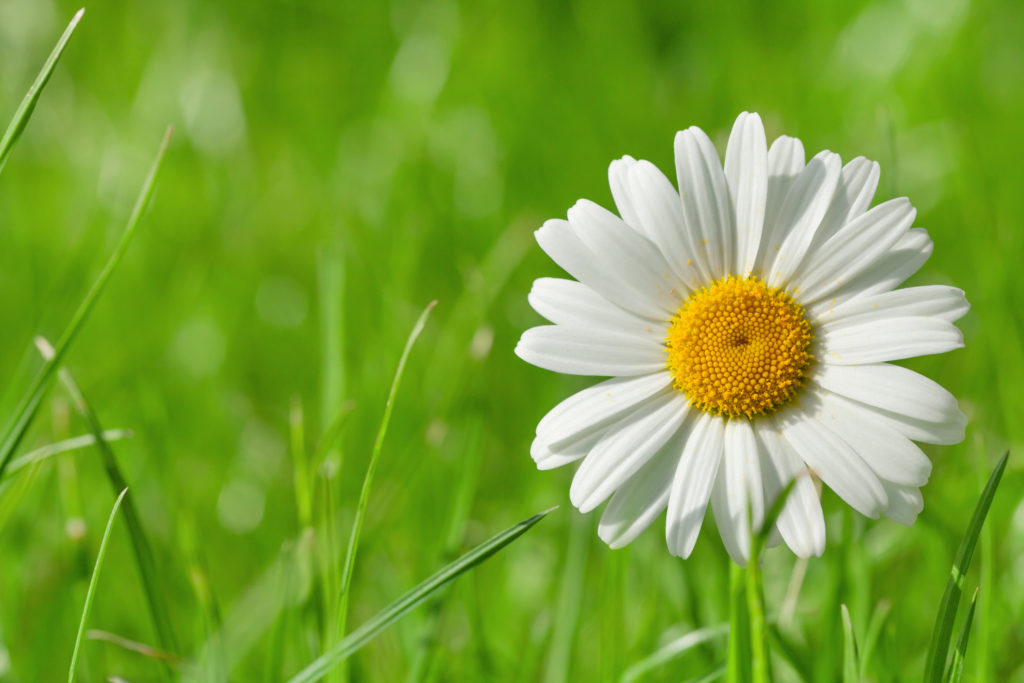
Daisy weeds are considered to be one of the most common perennial weeds that pop up in lawns. Their main characteristics include white petals that surround a yellow center, and you’ll be able to tell that these are in fact a weed by looking closely at the leaves – daisy weeds have green leaves that resemble spoons. If you’ve ever tried to remove daisy weeds by mowing you’ll know that they are extremely resilient, so you’ll need to invest in a daisy grubber to keep them away.
9. Dandelions (Taraxacum)
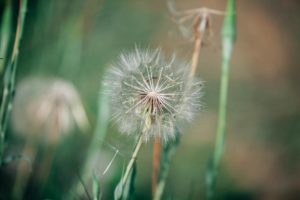
Visually, you may recognize these better when they have a fluffy, white ball on top of the stem (we’re sure you’ve made a wish on one in the past), but before a dandelion becomes this, it is actually what looks like a yellow flower. Typically you’ll see these in abundance in spring and fall, and they’ll be easy to pick out since they can grow to be pretty tall. And though the best way to prevent dandelions from popping up in your lawn is to have thick, healthy grass, there are herbicides you can use to spray them that won’t damage your grass too.
10. Field bindweed (Convolvulus arvensis)
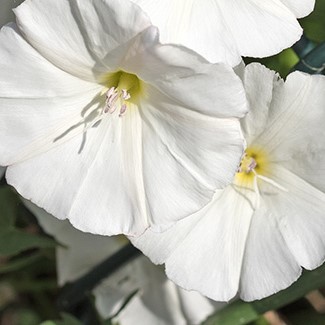
Field Bindweed, with its white, bell-shaped flowers, is a trailing, climbing vine native to Europe and Asia. It grows along roadsides and fields, and can easily invade your yard. This pretty weed resembles and is related to morning glory, but it is hard to contain and will compete with your other flowers for nutrients and sun if allowed to get a roothold. Bindweed spreads by underground rhizomes and deep roots that must be dug out to permanently get rid of the plant. It is also best to remove it before the flowers go to seed since they can remain viable in the soil for up to 20 years.
11. Fleabane (Erigeron sp.)
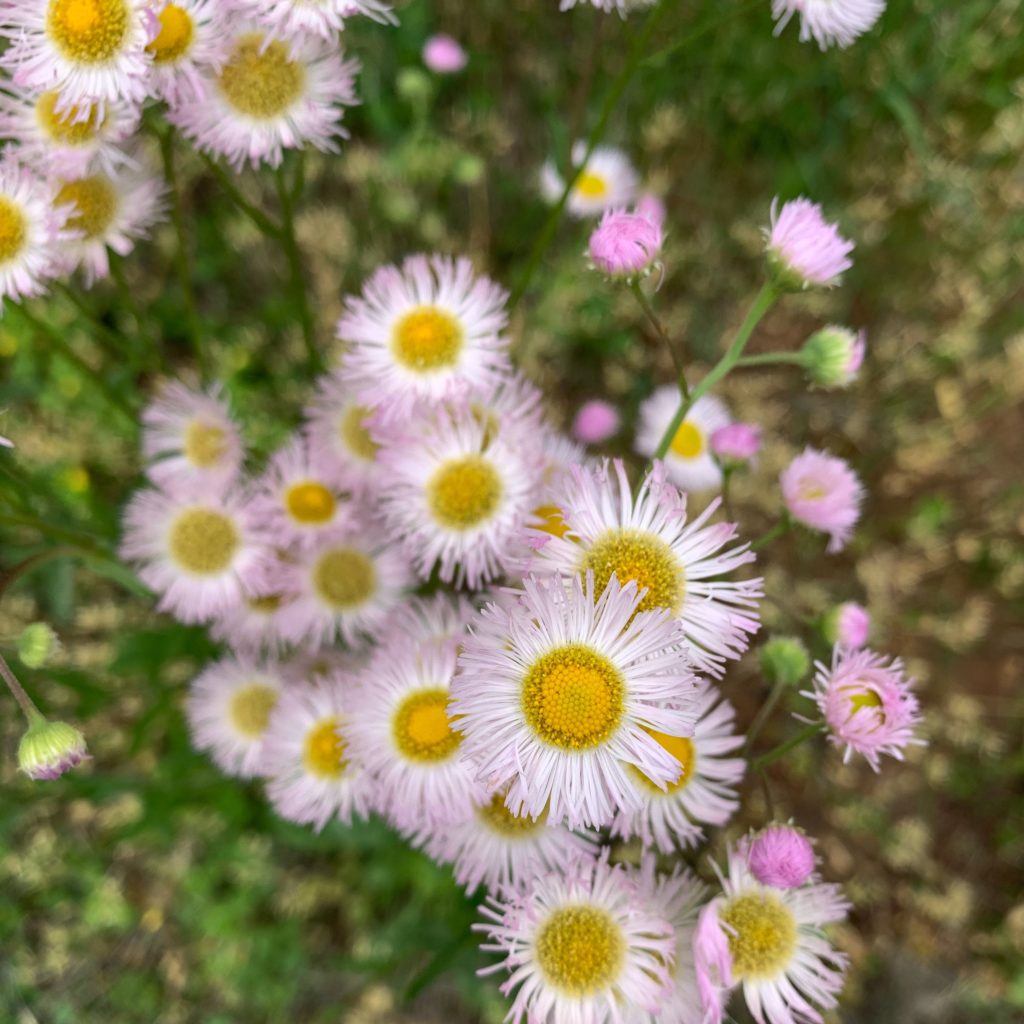
Fleabanes are delicate, half- to three-quarter inch, daisy-like flowers with yellow centers and numerous, fine white petals. There are several species of fleabane, and they all bloom from spring to fall. They are a common sight along roadsides, in meadows, fields, woodlands, and yards. Most species grow in the bright sun, but others do best in shady locations. Fleabanes are beautiful in wildflower gardens, so it’s up to you whether you allow them to grow in your yard.
12. Goldenrod (Solidago sp.)
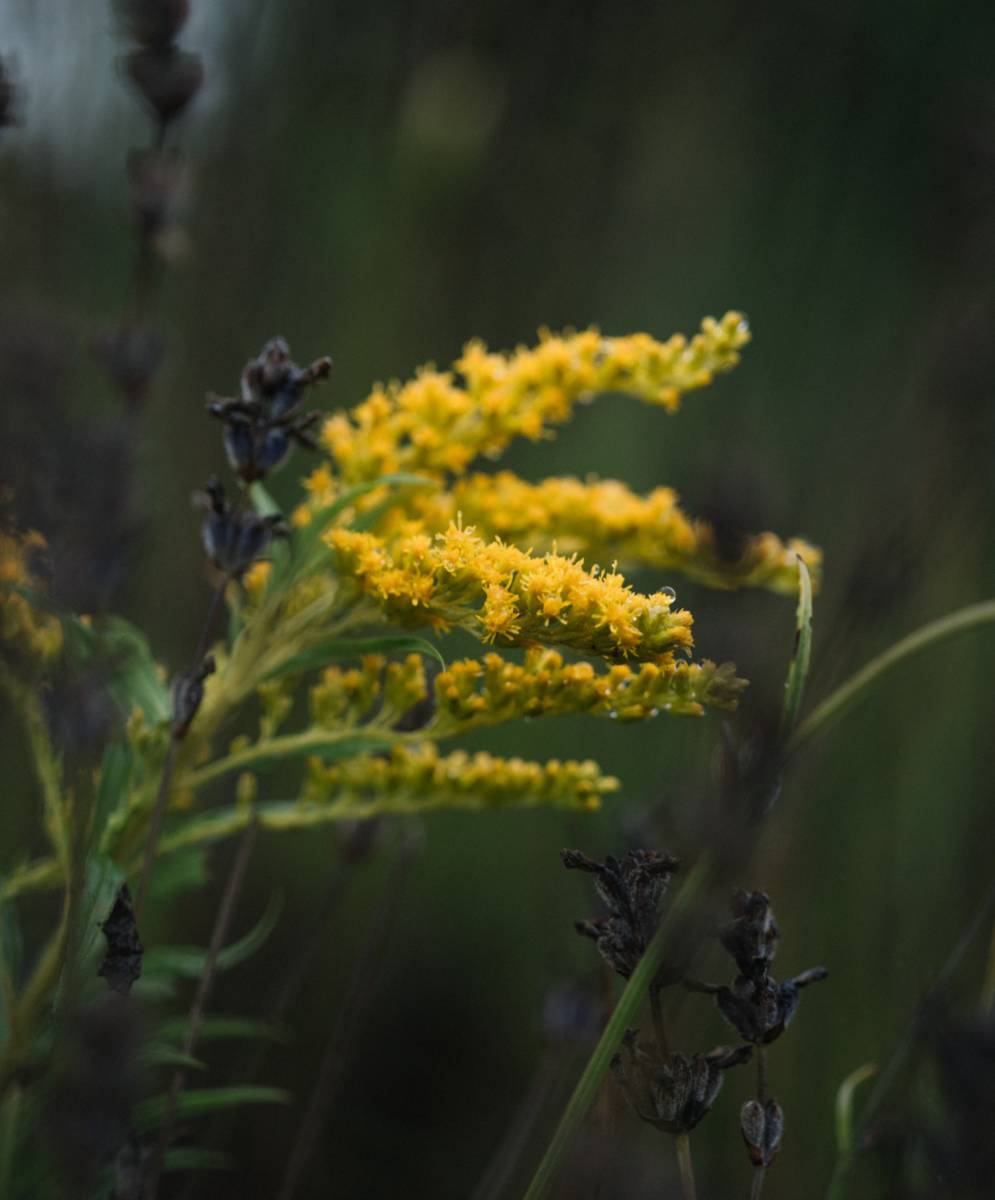
There are between 60-70 species of goldenrod in the United States with plume-shaped, flat-topped, or narrow, spike-like, yellow flower heads. These weeds are a familiar sight along roadsides, in fields and meadows, thickets, and in open, sunny clearings. They foreshadow the coming of autumn since most of the species bloom from July through October. Goldenrods are not good plants for the garden, but are often used in fall-themed flower arrangements.
13. Henbits (Lamium amplexicaule)

Henbits are winter annuals that produce pink or purple flowers on top of their green foliage. The good news with henbits is that they are usually pretty easy to remove by hand. However, if you don’t catch them in time, they begin to take over your lawn or garden. In that case, you’ll want to opt for using a post-emergent herbicide to remove them.
14. Jimsonweed, thorn apple, devil’s snare (Datura stramonium)
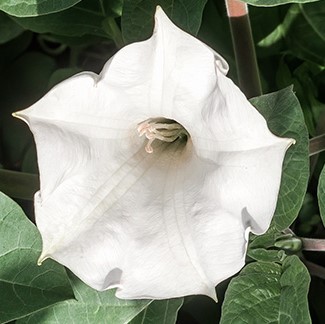
Jimsonweed is a plant that you would not want in your yard. It has 3″-5″ long, white to light purple, trumpet-shaped flowers that bloom at night, and coarsely toothed leaves. It is thought to be native to Central America, as are all of its cousins in the nightshade family, and it has spread and naturalized throughout the United States. The flower is beautiful, but the plant contains hallucinogenic alkaloids that can be toxic. For your family’s safety, it would be best to remove this weed.
15. Milkweed (Asclepias sp.)
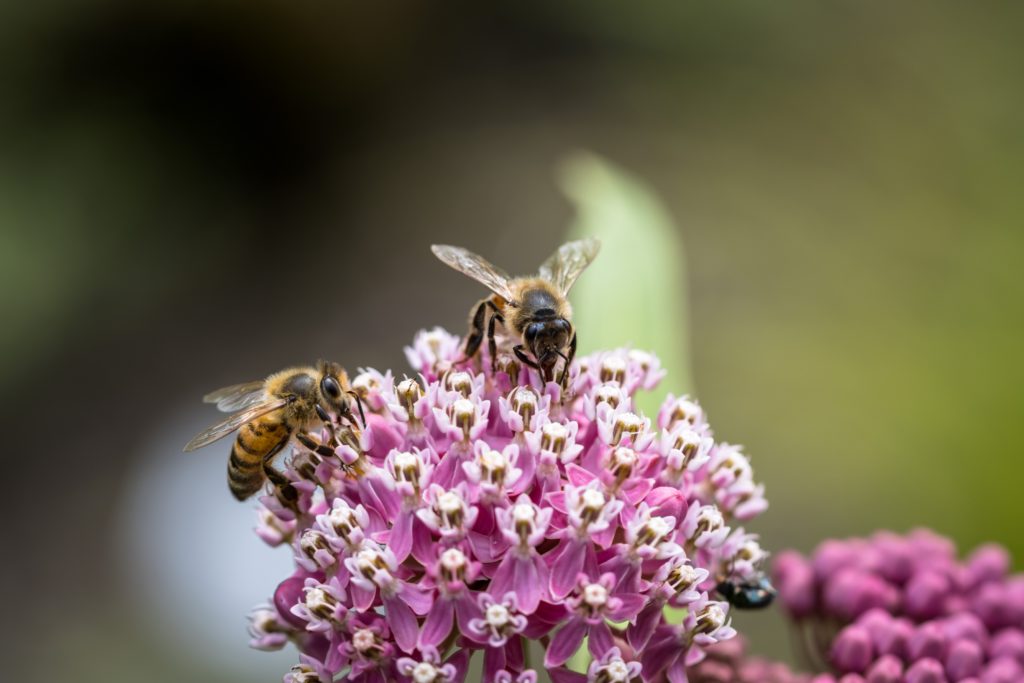
Milkweeds, with their dense clusters of pinkish-purple flowers, are a source of nectar for monarch butterflies. They are native to North America, and are frequently seen in fields and meadows. One species, butterfly weed (Asclepias tuberosa), is a popular garden flower for butterfly gardens. All of the Milkweed species are large-textured plants that love full sun and moist soil.
16. Oxalis (corniculata)

Don’t let an oxalis plant fool you into thinking it’s a clover! Although its leaves look like clovers, you’ll be able to tell the difference by looking for flowers — oxalis plants produce a cup-shaped yellow flower in both summer and fall. Since these are known to grow in shady and sunny areas, there’s a good chance you might see them in your yard. You can keep them at bay by adding mulch in the spring.
17. Queen Anne’s lace, wild carrot (Daucus carota)
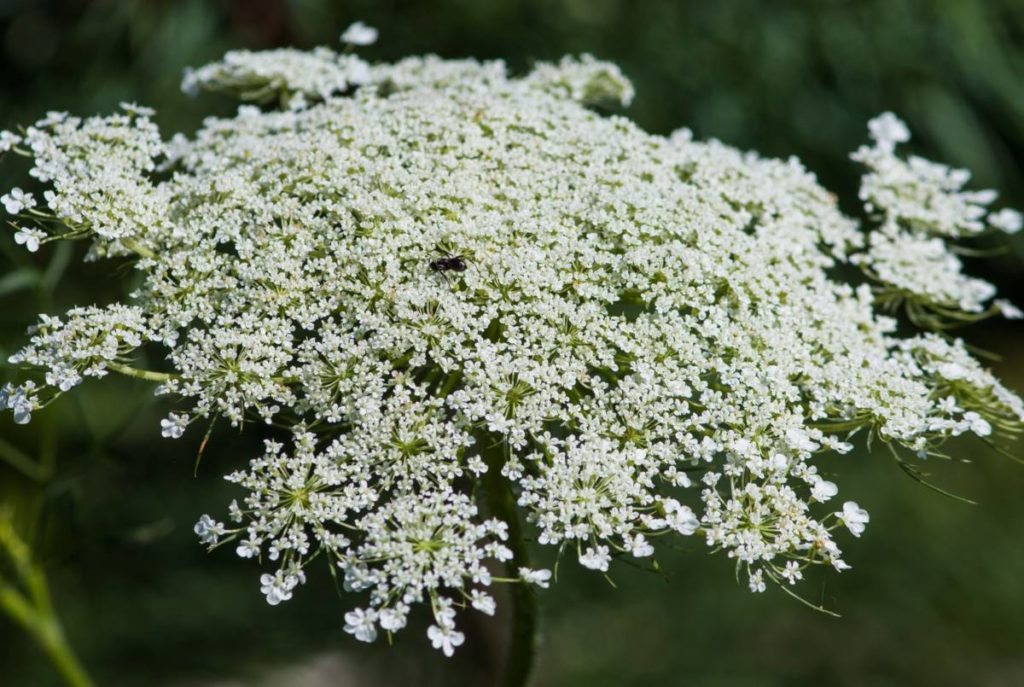
This is a pretty flowering weed with a flat, white, lacy flower head that you will see along sunny roadsides and meadows during the summer. Queen Anne’s Lace is a biennial that is native to temperate Europe and southwest Asia that has naturalized all over North America. It is directly related to garden carrots. In fact, its roots can be eaten when they are young before they become woody with age, and the leaves, flowers, and seeds are also safe to eat. But be careful! This pretty wildflower looks very much like poison hemlock (Conium maculatum), a weed that is highly toxic to humans and pets. The way you can tell them apart is that Queen Anne’s lace has green, hairy stems and poison hemlock’s stems are blotchy purple and smooth (without hair).
18. White clovers (trifolium repens)
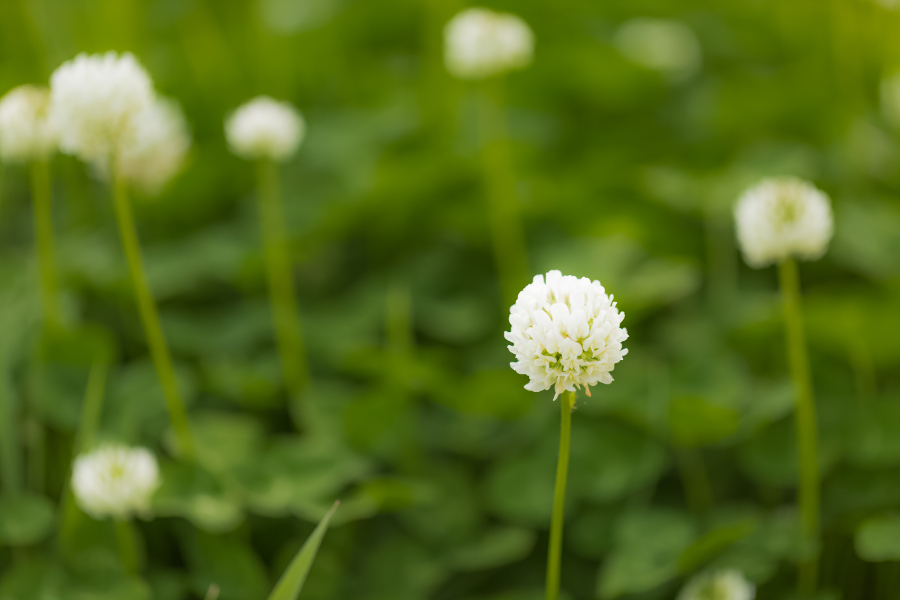
White clover weeds are normally found growing in soil that is rich in nutrients and are best described as producing white or pink flowers. These too are perennial weeds and are known to have three-lobed leaves. You are more likely to see these particular weeds in areas of your lawn that receive sun and partial shade. Although we usually think of weeds as being a nuisance, these could actually be somewhat helpful since they release nitrogen into soil.
19. Wild roses (Rosa sp.)
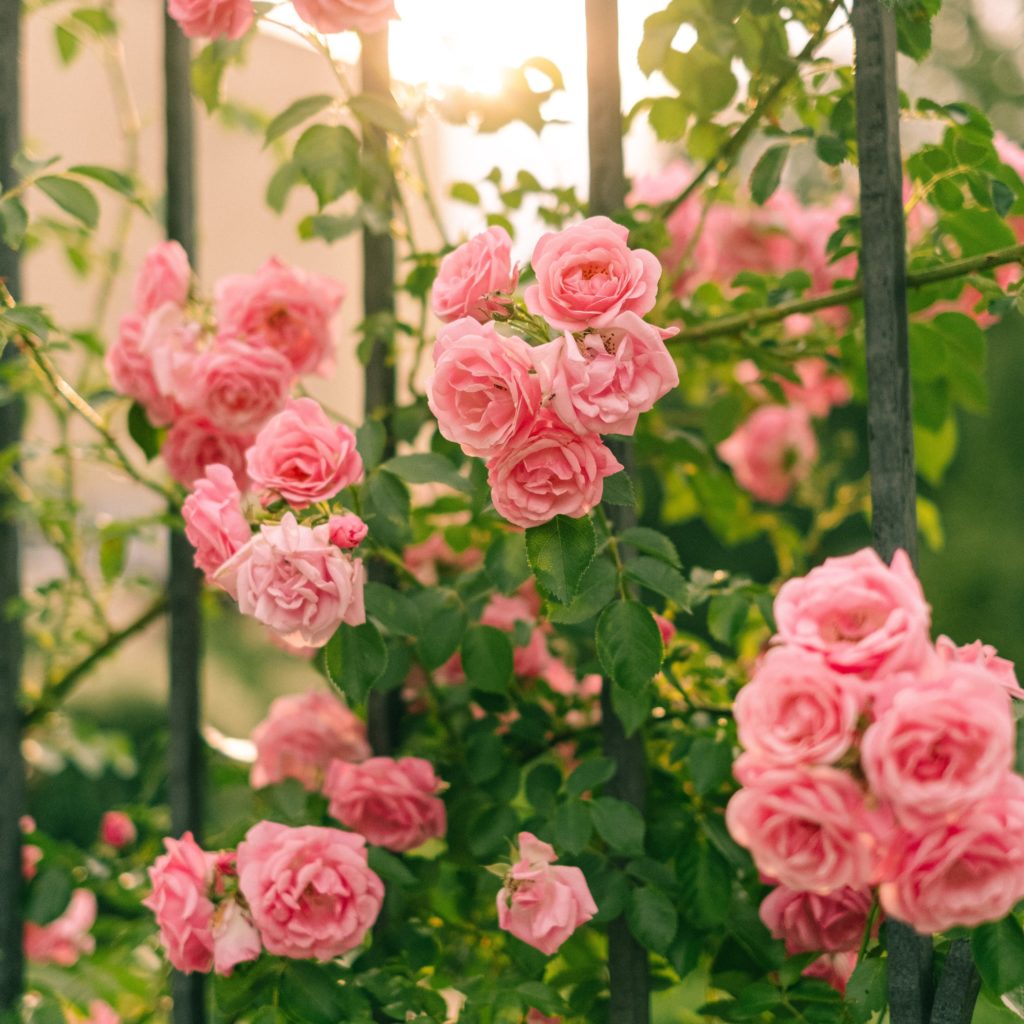
Native wild roses grow all over the United States in pastures, meadows, woodlands, hedgerows, and yards. They are shrubby and do more spreading than their highly bred cousins. Their charming, pink or white flowers are simple, with five flat petals, and they bloom anywhere from May to August depending on the species. Wild roses have a following, and are preferred by some for their rustic beauty. Others consider them weeds. When planted in a garden, they do need to be pruned back to keep them contained since they will spread and overtake an area.
20. Wild violets (Viola odorata)
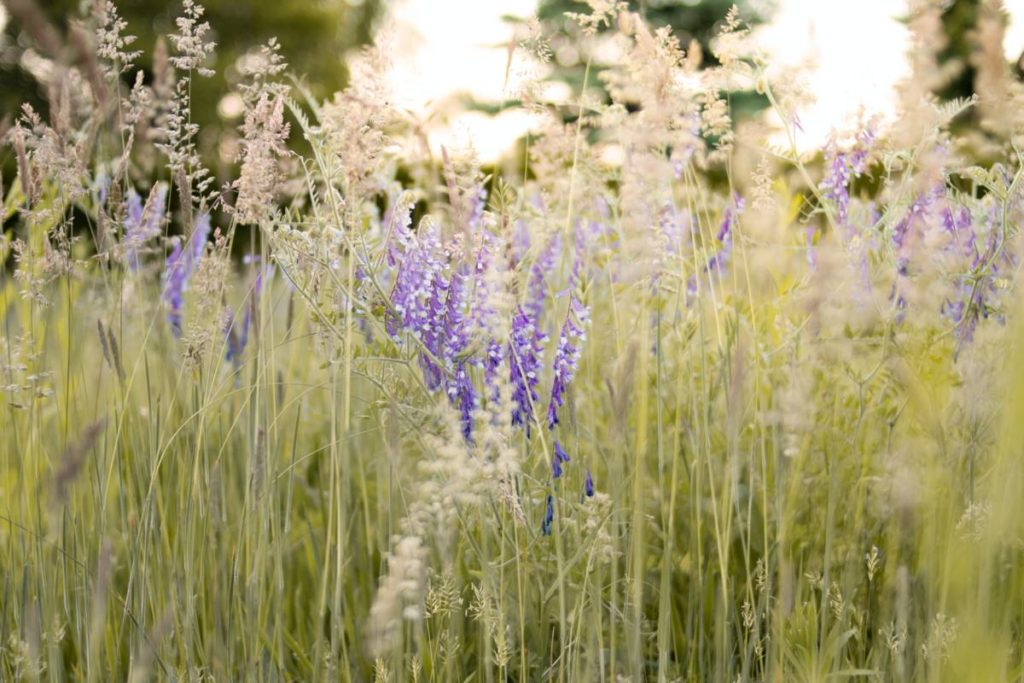
Just like daisy weeds and white clovers, violets are perennial weeds. These produce flowers that are either white or lavender in color, and although they may look pretty, they can become pretty invasive and difficult to manage if you don’t treat them with the proper herbicide quickly. Generally speaking, these weeds appear in thin lawns rather than thick, so check shady areas of your yard for signs of them (grass is typically thinner in shady spots).







